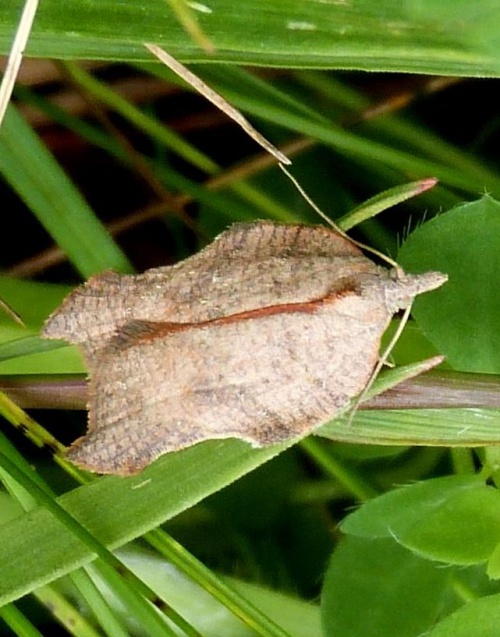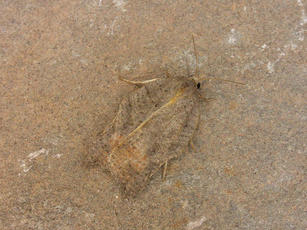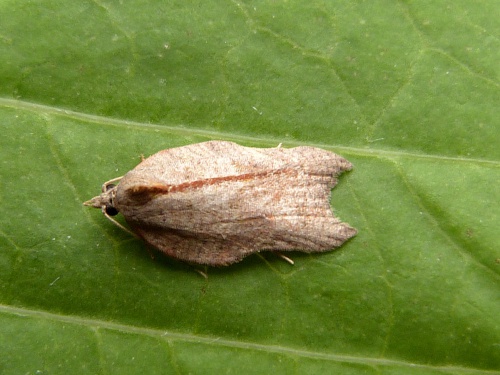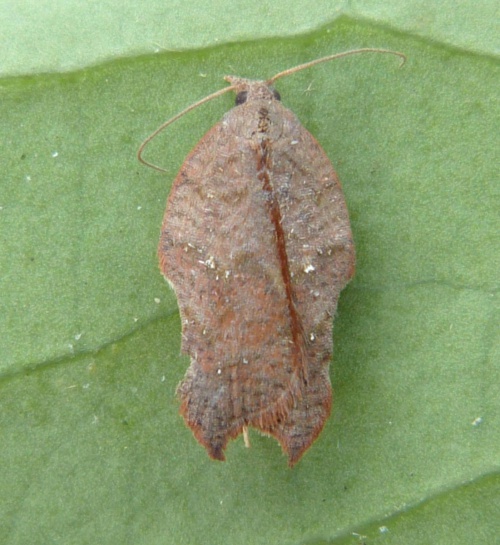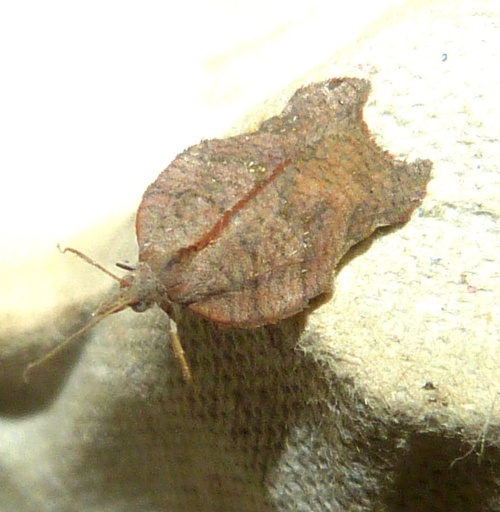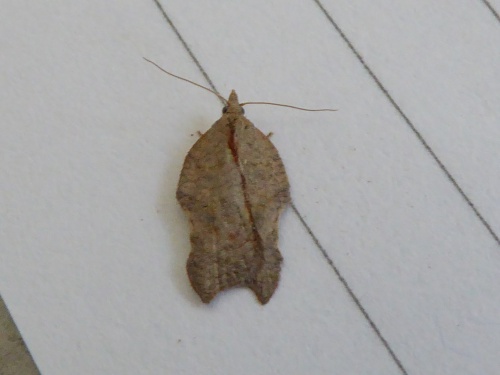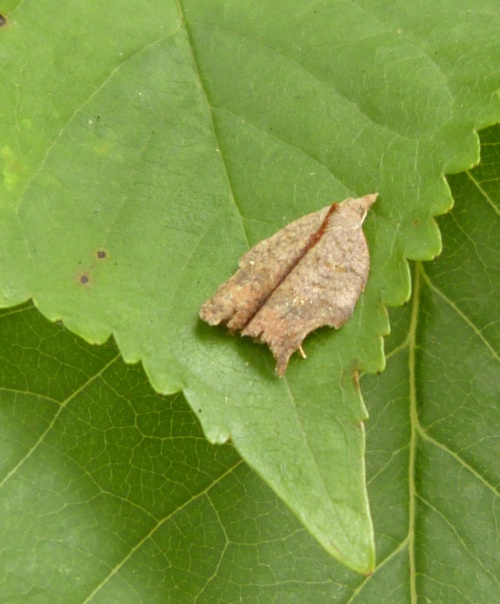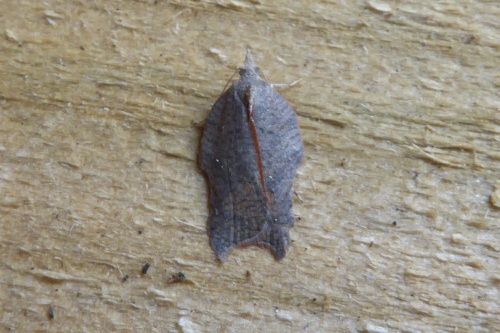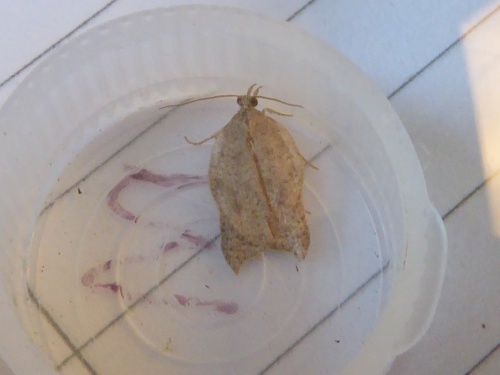Acleris emargana
Notch Wing Tortrix
Notch-wing Button
Wingspan 18 to 22 mm. The notched and hooked forewings of this species create a very distinctive outline, but the depth of the emargination varies, and can even be absent. Acleris emargana has recently been split from Acleris effractana and national guidelines now call for all records for these two species to be confirmed by gen det. Where this has not taken place the records should be submitted as Acleris emargana - effractana agg.
Acleris effractana
Acleris emargana has recently been split from Acleris effractana and national guidelines now call for all records for these two species to be confirmed by gen det. Where this has not taken place the records should be submitted as Acleris emargana - effractana agg.
Around the larval foodplants.
Flying from July to September.
The larvae feed on the leaves and shoots of trees such as Willow, Poplar and Birch.
The species is commonest in the south of Britain, becoming less common further north. In the Butterfly Conservation’s Microlepidoptera Report 2011 this species was classified as common.
Acleris emargana is fairly frequent, though not really common, in Leicestershire and Rutland. There are no VC55 records at present for the similar Acleris effractana.
Leicestershire & Rutland Map
Enter a town or village to see local records
MAP KEY:
Yellow squares = NBN records (all known data)
Coloured circles = NatureSpot records: 2020+ | 2015-2019 | pre-2015
UK Map
Species profile
- Common names
- Notch Wing Tortix, Notch-wing Button
- Species group:
- Moths
- Kingdom:
- Animalia
- Order:
- Lepidoptera
- Family:
- Tortricidae
- Records on NatureSpot:
- 28
- First record:
- 23/09/2006 (Skevington, Mark)
- Last record:
- 26/09/2023 (Cranston, Elspeth)
Total records by month
% of records within its species group
10km squares with records
The latest images and records displayed below include those awaiting verification checks so we cannot guarantee that every identification is correct. Once accepted, the record displays a green tick.
In the Latest Records section, click on the header to sort A-Z, and again to sort Z-A. Use the header boxes to filter the list.


